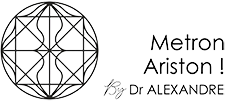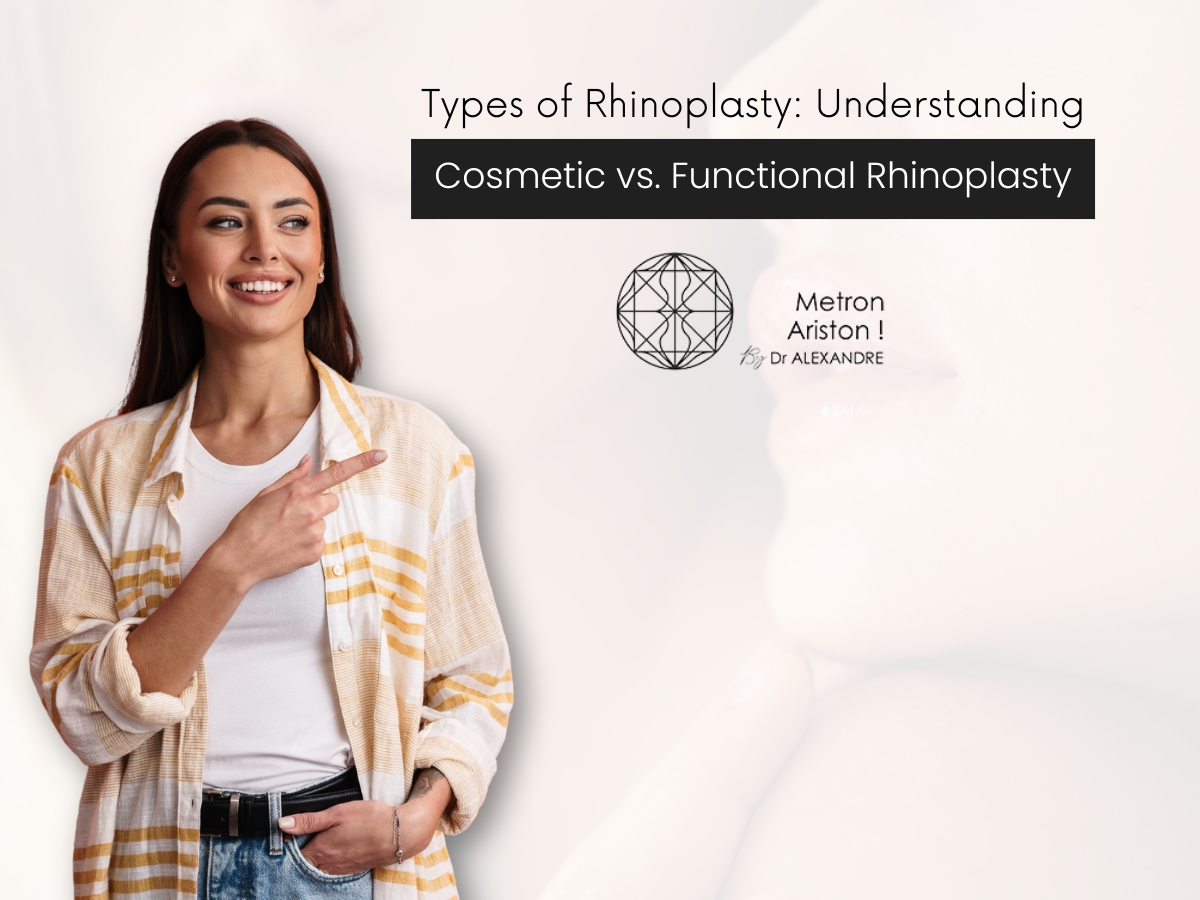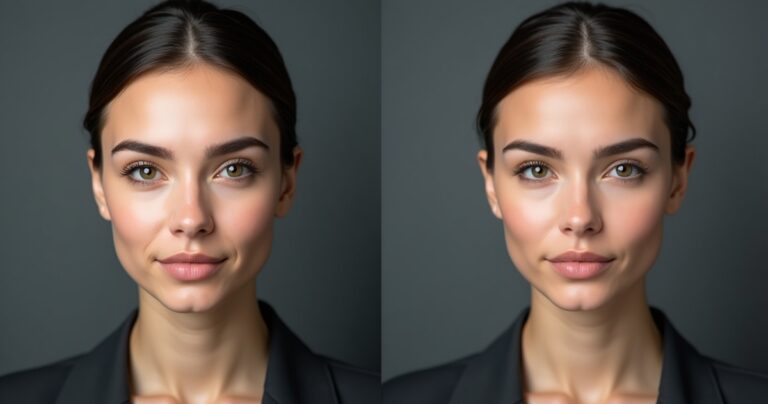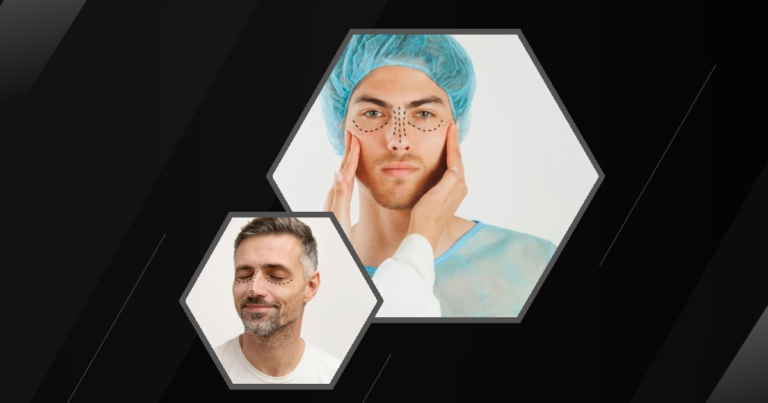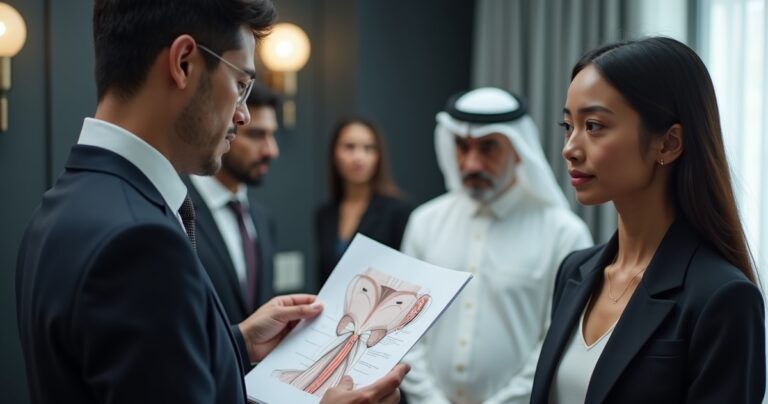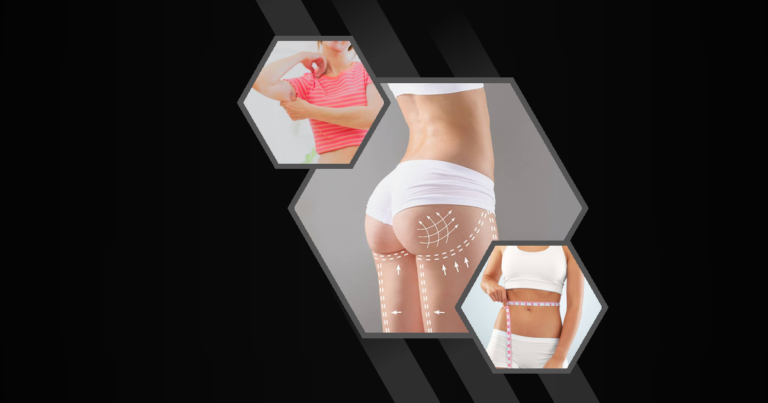Types of Rhinoplasty: Understanding Cosmetic vs. Functional Rhinoplasty
How Does Rhinoplasty Work?
Rhinoplasty , commonly known as a nose job, is a surgical procedure designed to alter the shape or function of the nose. It can be performed for cosmetic reasons, to improve the appearance of the nose, or for functional reasons, such as correcting breathing issues. The primary goal of rhinoplasty is to achieve a harmonious balance between the nose and other facial features, enhancing overall facial aesthetics or improving nasal function.
Types of Rhinoplasty
Open Rhinoplasty
Open rhinoplasty involves making an incision across the columella, the tissue between the nostrils, allowing the surgeon to lift the skin and have a clear view of the nasal structures. This approach is often used for more complex cases where significant reshaping is required. The open technique provides greater precision and control, making it a preferred choice for many surgeons.
- The incision across the columella
- A clear view of nasal structures
- Ideal for complex reshaping
Closed Rhinoplasty
Closed rhinoplasty, also known as endonasal rhinoplasty, involves incisions made within the nostrils, leaving no visible scars. This technique is typically used for less extensive reshaping and offers a shorter recovery time. The closed approach is less invasive, making it a popular choice for patients seeking minor adjustments.
- Incisions within the nostrils
- No visible scars
- Suitable for minor reshaping
Tip Plasty
Tip plasty focuses solely on reshaping the tip of the nose. This procedure is ideal for individuals who are satisfied with the overall shape of their nose but wish to refine the nasal tip. Tip plasty can address issues such as a bulbous tip, drooping tip, or asymmetry, providing a more balanced and refined appearance.
- Focuses on nasal tip reshaping
- Addresses bulbous or drooping tips
- Enhances nasal symmetry
Septorhinoplasty
Septorhinoplasty combines the cosmetic benefits of rhinoplasty with the functional improvements of septoplasty, which corrects a deviated septum. This procedure is ideal for individuals who experience breathing difficulties due to structural issues within the nose. By addressing both aesthetic and functional concerns, septorhinoplasty offers comprehensive benefits.
- Combines cosmetic and functional improvements
- Corrects deviated septum
- Enhances breathing and appearance
Revision Rhinoplasty
Revision rhinoplasty is performed on patients who have had previous nose surgery but are dissatisfied with the results. This procedure can address issues such as asymmetry, scarring, or functional problems that were not resolved in the initial surgery. Revision rhinoplasty is often more complex and requires a skilled surgeon to achieve the desired outcome.
- Addresses dissatisfaction with previous surgery
- Corrects asymmetry or scarring
- Requires skilled surgical expertise
Liquid Rhinoplasty
Liquid rhinoplasty, also known as non-surgical rhinoplasty, involves the use of injectable fillers to alter the shape of the nose. This procedure is ideal for individuals seeking temporary changes or those who are not ready for surgery. Liquid rhinoplasty can smooth out bumps, enhance the nasal bridge, or refine the tip, offering immediate results with minimal downtime.
- Uses injectable fillers
- Ideal for temporary changes
- Offers immediate results
Surgical Approaches to Rhinoplasty
External Approach
The external approach, used in open rhinoplasty, involves making an incision on the columella to access the nasal structures. This method provides the surgeon with a direct view, allowing for precise modifications. The external approach is often chosen for complex cases where significant reshaping is necessary.
- The incision on the columella
- Direct view of nasal structures
- Suitable for complex modifications
Endonasal Approach
The endonasal approach, used in closed rhinoplasty, involves making incisions within the nostrils. This technique leaves no visible scars and is less invasive, making it a preferred choice for patients seeking minor adjustments. The endonasal approach offers a quicker recovery time and is ideal for less extensive reshaping.
- Incisions within the nostrils
- No visible scars
- Quicker recovery time
Rhinoplasty Procedure Details
Pre-operative Preparation
Before undergoing rhinoplasty, patients must undergo a thorough consultation with their surgeon to discuss their goals and expectations. Pre-operative preparation includes medical evaluations, photographs, and a discussion of the surgical plan. Patients are advised to avoid certain medications and smoking to ensure optimal healing.
- Thorough consultation with the surgeon
- Medical evaluations and photographs
- Avoidance of certain medications and smoking
During the Surgery
Rhinoplasty is typically performed under general anesthesia and can take several hours, depending on the complexity of the procedure. The surgeon will make the necessary incisions, reshape the nasal structures, and close the incisions with sutures. The surgery aims to achieve the desired aesthetic and functional outcomes.
- Performed under general anesthesia
- Incisions and reshaping of nasal structures
- Closure with sutures
Post-operative Care
Post-operative care is crucial for a successful recovery. Patients are advised to rest, keep their heads elevated, and avoid strenuous activities. Swelling and bruising are common and will gradually subside over time. Follow-up appointments with the surgeon are essential to monitor healing and address any concerns.
- Rest and head elevation
- Avoidance of strenuous activities
- Follow-up appointments with the surgeon
Benefits and Risks of Rhinoplasty
Advantages of Nose Surgery
Rhinoplasty offers numerous benefits, including improved facial harmony, enhanced self-confidence, and better nasal function. For individuals with breathing difficulties, rhinoplasty can significantly improve their quality of life. The procedure can also correct congenital defects or injuries, providing both aesthetic and functional improvements.
- Improved facial harmony
- Enhanced self-confidence
- Better nasal function
Potential Complications
As with any surgical procedure, rhinoplasty carries potential risks, including infection, bleeding, and adverse reactions to anesthesia. Other complications may include scarring, asymmetry, or dissatisfaction with the results. Patients need to discuss these risks with their surgeons and follow post-operative care instructions to minimize complications.
- Infection and bleeding
- Adverse reactions to anesthesia
- Scarring or asymmetry
Recovery and Results
Timeline for Healing
The recovery timeline for rhinoplasty varies for each patient, but most individuals can expect to return to normal activities within two weeks. Swelling and bruising will gradually subside, with significant improvements visible within a few months. Full healing and final results may take up to a year.
- Return to normal activities within two weeks
- Swelling and bruising subside over time
- Full healing may take up to a year
When to Expect Final Results
Final results from rhinoplasty are typically visible within 6 to 12 months as the swelling completely subsides. Patients will notice gradual improvements in the shape and function of their noses, achieving the desired outcome over time. Patience is key, as the healing process can be lengthy.
- Final results visible within 6 to 12 months
- Gradual improvements over time
- Patience is essential for full healing
Longevity of Rhinoplasty Results
Rhinoplasty results are generally long-lasting, with many patients enjoying their new nose for a lifetime. However, factors such as aging, injury, or changes in facial structure can affect the longevity of the results. Maintaining a healthy lifestyle and protecting the nose from injury can help preserve the outcome.
- Long-lasting results
- Factors affecting longevity
- Importance of a healthy lifestyle
Choosing the Right Surgeon
Importance of Board Certification
Choosing a board-certified surgeon is crucial for ensuring a safe and successful rhinoplasty procedure. Board certification indicates that the surgeon has undergone rigorous training and adheres to high standards of practice. Patients should verify their surgeon’s credentials and experience before proceeding with surgery.
- Ensures safe and successful procedure
- Indicates rigorous training
- Verify credentials and experience
Dr. Alexandre’s Expertise in Rhinoplasty
Dr. Alexandre is renowned for his expertise in rhinoplasty, offering personalized care and exceptional results. With years of experience and a commitment to patient satisfaction, Dr. Alexandre is a trusted choice for individuals seeking both cosmetic and functional improvements. His approach combines artistry with precision, ensuring optimal outcomes.
- Renowned expertise in rhinoplasty
- Personalized care and exceptional results
- Combines artistry with precision
Rhinoplasty Statistics
Prevalence of Nose Surgery
According to the American Society of Plastic Surgeons, rhinoplasty was the most common facial plastic surgery procedure in 2020, with 352,555 procedures performed. This statistic highlights the popularity and demand for nose surgery, reflecting its effectiveness in addressing both cosmetic and functional concerns.
- Most common facial plastic surgery in 2020
- 352,555 procedures performed
- Popularity and demand for nose surgery
Preparing for Your Rhinoplasty Consultation
Questions to Ask Your Surgeon
During your rhinoplasty consultation, it’s important to ask questions to ensure you have a clear understanding of the procedure. Inquire about the surgeon’s experience, the surgical plan, potential risks, and the expected recovery process. Being well-informed will help you make confident decisions about your surgery.
- Inquire about the surgeon’s experience
- Discuss surgical plan and risks
- Understand the recovery process
What to Expect During the Initial Visit
During the initial consultation, the surgeon will evaluate your nasal structure, discuss your goals, and develop a personalized surgical plan. You will also have the opportunity to view before-and-after photos of previous patients. This visit is an essential step in preparing for a successful rhinoplasty procedure.
- Evaluation of nasal structure
- Discussion of goals and surgical plan
- Opportunity to view before-and-after photos
Combining Rhinoplasty with Other Procedures
Facial Plastic Surgery Options
Rhinoplasty can be combined with other facial plastic surgery procedures to achieve comprehensive facial rejuvenation. Options include a facelift, eyelid surgery, or chin augmentation, which can enhance overall facial harmony. Combining procedures can provide more dramatic and balanced results.
- Facelift and eyelid surgery
- Chin augmentation
- Comprehensive facial rejuvenation
Skin Care Treatments for Enhanced Results
In addition to surgical procedures, skin care treatments can enhance the results of rhinoplasty. Options such as chemical peels, laser treatments, or dermal fillers can improve skin texture and tone, complementing the aesthetic improvements achieved through nose surgery.
- Chemical peels and laser treatments
- Dermal fillers
- Improved skin texture and tone
Male Rhinoplasty
Unique Considerations for Men
Male rhinoplasty requires unique considerations to maintain masculine facial features while achieving the desired improvements. Surgeons must take into account the differences in skin thickness, nasal structure, and aesthetic goals. A tailored approach ensures natural and satisfying results for male patients.
- Maintain masculine facial features
- Consider skin thickness and nasal structure
- Tailored approach for natural results
Popular Techniques for Male Patients
Popular techniques for male rhinoplasty include dorsal hump reduction, tip refinement, and septoplasty. These techniques address common concerns among male patients, such as a prominent nasal bridge or breathing difficulties. The goal is to achieve a balanced and masculine appearance. Nose function improvement helps you breathe better and smell things more clearly It can make your nose work better so you feel healthier overall Sonic nasal sculpting uses sound waves to reshape the nose without surgery It can help improve breathing and appearance without cutting or stitches
Advanced cosmetic procedure uses special tools and methods to make people look younger or change their appearance in big ways that regular beauty treatments cannot do Rhinoplasty preparation essentials Stop smoking and avoid certain medications before surgery Follow your doctor’s instructions for fasting and cleaning your face on the day of the procedure
- Dorsal hump reduction
- Tip refinement and septoplasty
- Balanced and masculine appearance
Aesthetic Confidence and Rhinoplasty
Psychological Benefits of Nose Surgery
Rhinoplasty can have significant psychological benefits, boosting self-esteem and confidence. By improving facial harmony and addressing aesthetic concerns, patients often experience enhanced satisfaction with their appearance. This newfound confidence can positively impact various aspects of their lives.
- Boosts self-esteem and confidence
- Enhances facial harmony
- Positive impact on various life aspects
Realistic Expectations for Results
Patients need to have realistic expectations for rhinoplasty results. While the procedure can provide significant improvements, it may not achieve perfection. Open communication with the surgeon and understanding the limitations of the procedure are key to achieving satisfaction with the outcome.
- Importance of realistic expectations
- Open communication with the surgeon
- Understanding procedure limitationslts
FAQ’s
What are the different types of nose jobs?
There are several types of nose jobs, including open rhinoplasty, closed rhinoplasty, tip plasty, septorhinoplasty, revision rhinoplasty, and liquid rhinoplasty. Each type addresses specific concerns and offers unique benefits. Consulting with a qualified surgeon can help determine the best approach for individual needs.
How long does it take to recover from rhinoplasty?
Recovery from rhinoplasty typically takes about two weeks for most patients to return to normal activities. However, full healing and final results can take up to a year. It’s important to follow post-operative care instructions to ensure a smooth recovery process.
What is the most common type of rhinoplasty?
The most common type of rhinoplasty is closed rhinoplasty, which involves incisions made within the nostrils. This technique is popular due to its less invasive nature and quicker recovery time. It is often used for minor reshaping and offers no visible scarring.

